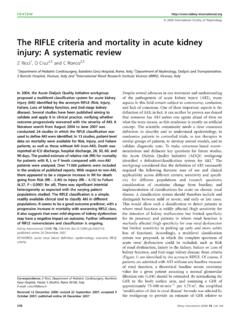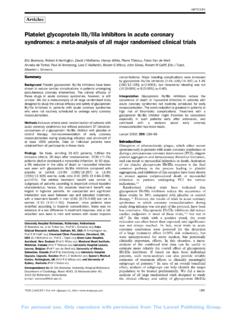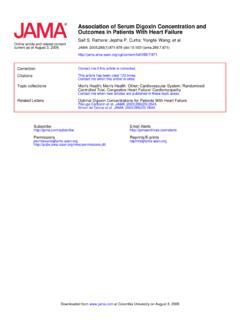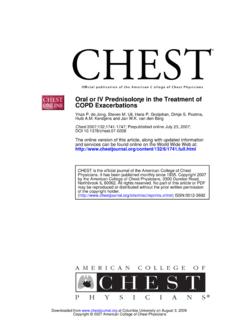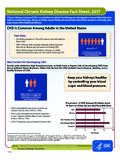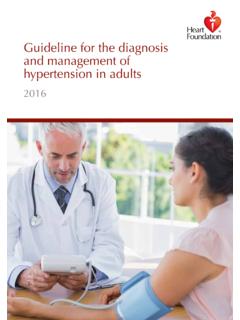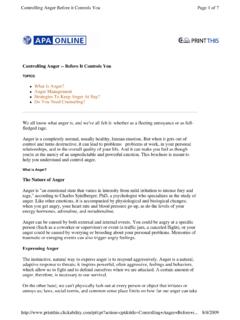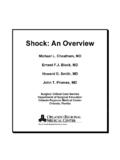Transcription of The Seventh Report of the Joint National …
1 Current as of August 3, 2009. Online article and related content . 2003;289(19):2560-2571 ( ) JAMA Aram V. Chobanian; George L. Bakris; Henry R. Black; et al. high blood pressure : The JNC 7 ReportPrevention, Detection, Evaluation, and Treatment of The Seventh Report of the Joint National Committee on Correction Contact me if this article is corrected. ;290/2/197 Correction is appended to this PDF and also available at Citations Contact me when this article is cited. This article has been cited 4113 times. Topic collections Contact me when new articles are published in these topic the same issueRelated Articles published in . 2003;289(19) E. Kottke et al. JNC 7 It's More Than high blood pressure . 2003;289(19) M. Psaty et al. First-Line Agents: A Network Meta-analysisHealth Outcomes Associated With Various Antihypertensive Therapies Used as Related Letters.
2 2007;167(11) Oliveira de Abreu Silva. Retinal Vasculature Findings Do Not Add Information About Cardiovascular Risk . 2004;292(20) Micale Foody et al. In Reply: . 2003;290(10) G. Majernick et al.. 2003;290(10) Phillips.. 2003;290(10) J. Brotman et al.. 2003;290(10) Caspi.. 2003;290(10) Divakara Murthy.. 2003;290(10) Sackner-Bernstein.. 2003;290(10) R. Nelson.. 2003;290(10) Teik Ong. The JNC 7 Hypertension Guidelines Alerts at Columbia University on August 3, 2009 from CLINICIAN S CORNERSPECIAL COMMUNICATIONThe Seventh Report of the JointNational Committee on Prevention,Detection, Evaluation, and Treatmentof high blood PressureTheJNC7 ReportAram V. Chobanian, MDGeorge L. Bakris, MDHenry R. Black, MDWilliam C. Cushman, MDLee A. Green, MD, MPHJ oseph L.
3 Izzo, Jr, MDDaniel W. Jones, MDBarry J. Materson, MD, MBAS uzanne Oparil, MDJackson T. Wright, Jr, MD, PhDEdward J. Roccella, PhD, MPHand the National high BloodPressure Education ProgramCoordinating CommitteeFOR MORE THAN3 DECADES,THEN ational Heart, Lung, andBlood Institute (NHLBI) hasadministered the NationalHigh blood pressure EducationProgram (NHBPEP) CoordinatingCommittee, a coalition of 39 majorprofessional, public, and voluntaryorganizations and 7 federal important function is to issueguidelines and advisories designed toincrease awareness, prevention, treat-ment, and control of hypertension( high blood pressure [BP]). Since thepublication of The Sixth Report ofthe Joint National Committee on thePrevention, Detection, Evaluation, andTreatment of high blood pressure (JNC VI) released in 1997,1manylarge-scale clinical trials have decision to appoint a commit-tee for The Seventh Report of the JointAuthor Affiliations and Financial Disclosuresare listedat the end of this Author and Reprints:Edward J.
4 Roc-cella, PhD, MPH, National Heart, Lung, and blood In-stitute, National Institutes of Health, 31 Center Dr, MSC2480, Bethesda, MD 20892 (e-mail: The Seventh Report of the Joint National Committee on Prevention, De-tection, Evaluation, and Treatment of high blood pressure provides a newguideline for hypertension prevention and management. The following arethe key messages: (1) In persons older than 50 years, systolic blood pres-sure (BP) of more than 140 mm Hg is a much more important cardiovasculardisease (CVD) risk factor than diastolic BP; (2) The risk of CVD, beginningat 115/75 mm Hg, doubles with each increment of 20/10 mm Hg; individu-als who are normotensive at 55 years of age have a 90% lifetime risk fordeveloping hypertension; (3) Individuals with a systolic BP of 120 to 139mm Hg or a diastolic BP of 80 to 89 mm Hg should be considered as pre-hypertensive and require health-promoting lifestyle modifications to pre-vent CVD; (4) Thiazide-type diuretics should be used in drug treatment formost patients with uncomplicated hypertension, either alone or combinedwith drugs from other classes.)
5 Certain high -risk conditions are compellingindications for the initial use of other antihypertensive drug classes (angio-tensin-converting enzyme inhibitors, angiotensin-receptor blockers, -block-ers, calcium channel blockers); (5) Most patients with hypertension will re-quire 2 or more antihypertensive medications to achieve goal BP ( 140/90mm Hg, or 130/80 mm Hg for patients with diabetes or chronic kidneydisease); (6) If BP is more than 20/10 mm Hg above goal BP, considerationshould be given to initiating therapy with 2 agents, 1 of which usually shouldbe a thiazide-type diuretic; and (7) The most effective therapy prescribed bythe most careful clinician will control hypertension only if patients are mo-tivated. Motivation improves when patients have positive experiences withand trust in the clinician.
6 Empathy builds trust and is a potent , in presenting these guidelines, the committee recognizes that theresponsible physician s judgment remains 2003;289 also pp 2534 and ,May 21, 2003 Vol 289, No. 19(Reprinted) 2003 American Medical Association. All rights reserved. at Columbia University on August 3, 2009 from National Committee on Prevention, De-tection, Evaluation, and Treatment ofHigh blood pressure (JNC 7) wasbased on 4 factors: publication of manynew hypertension observational stud-ies and clinical trials; need for a newclear and concise guideline that wouldbe useful for clinicians; need to sim-plify the classification of BP; and a clearrecognition that the JNC reports werenot being used to their maximum ben-efit. This JNC Report is presented in 2separate publications: this current suc-cinct practical guide and a more com-prehensive Report to be published sepa-rately, which will provide a broaderdiscussion and justification for the cur-rent recommendations.
7 In presentingthese guidelines, the committee recog-nizes that the responsible physician sjudgment is paramount in managing hisor her publication of the JNC VI Report ,the NHBPEP Coordinating Committee,chaired by the director of the NHLBI, hasregularly reviewed and discussed the hy-pertension clinical trials at their bian-nual meetings. In many instances, theprincipal investigator of the larger stud-ies has presented the information di-rectly to the Coordinating Committee s presentations and re-views are summarized and posted on theNHLBI Web agreeing to com-mission a new Report , the director re-quested that the Coordinating Commit-tee members provide in writing a detailedrationale explaining the necessity to up-date the guidelines and to describe thecritical issues and concepts to be con-sidered for a new Report .
8 The JNC 7 chairwas selected in addition to a 9-memberexecutive committee appointed en-tirely from the NHBPEP CoordinatingCommittee membership. The NHBPEPC oordinating Committee served as mem-bers of 5 writing teams, each of whichwere co-chaired by 2 executive commit-tee concepts identified by the NH-BPEP Coordinating Committee mem-bership were used to develop the re-port outline. A timeline was developedto complete and publish the work in 5months. Based on the identified criti-cal issues and concepts, the executivecommittee identified relevant MedicalSubject Headings (MeSH) terms andkeywords to further review the scien-tific literature. These MeSH terms wereused to generate MEDLINE searchesthat focused on English-language, peer-reviewed scientific literature from Janu-ary 1997 through April 2003.
9 Varioussystems of grading the evidence wereconsidered and the classificationscheme used in JNC VI and otherNHBPEP clinical guidelines was se-lected,3,4which classifies studies ina process adapted from Last executive committee met on 6occasions, 2 of which included meet-ings with the entire Coordinating Com-mittee. The writing teams also met byteleconferenceandusedelectroniccom-mun ications to develop the drafts were created andreviewed in a reiterative fashion. At itsmeetings,theexecutivecommitteeuseda modified nominal group process toidentify and resolve issues. The NHB-PEP Coordinating Committee reviewedthe penultimate draft and providedwrittencommentstotheexecutivecom -mittee. In addition, 33 National hyper-tension leaders reviewed and Committee approved theJNC 7 of BPTABLE1provides a classification of BPfor adults aged 18 years or older.
10 Theclassification is based on the mean of2 or more properly measured seated BPreadings on each of 2 or more office vis-its. In contrast with the classificationprovided in the JNC VI Report , a newcategory designated prehypertensionhas been added, and stages 2 and 3hypertension have been and Management of blood pressure for Adults Aged 18 Years or OlderBPClassificationSystolicBP, mm Hg*DiastolicBP, mm Hg*Management*LifestyleModificationIniti al Drug TherapyWithout Compelling Indication With Compelling Indications Normal 120and 80 EncouragePrehypertension120-139or80-89 YesNo antihypertensive drugindicatedDrug(s) for the compellingindications Stage 1 hypertension140-159or90-99 YesThiazide-type diuretics for most;may consider ACE inhibitor,ARB, -blocker, CCB, orcombinationDrug(s) for the compellingindicationsOther antihypertensive drugs(diuretics, ACE inhibitor, ARB, -blocker, CCB) as neededStage 2 hypertension 160or 100 Yes2-Drug combination for most(usually thiazide-type diureticand ACE inhibitor or ARB or -blocker or CCB) Drug(s) for the compellingindicationsOther antihypertensive drugs(diuretics, ACE inhibitor, ARB, -blocker, CCB) as neededAbbreviations: ACE, angiotensin-converting enzyme; ARB, angiotensin-receptor blocker; BP, blood pressure ; CCB, calcium channel blocker.
